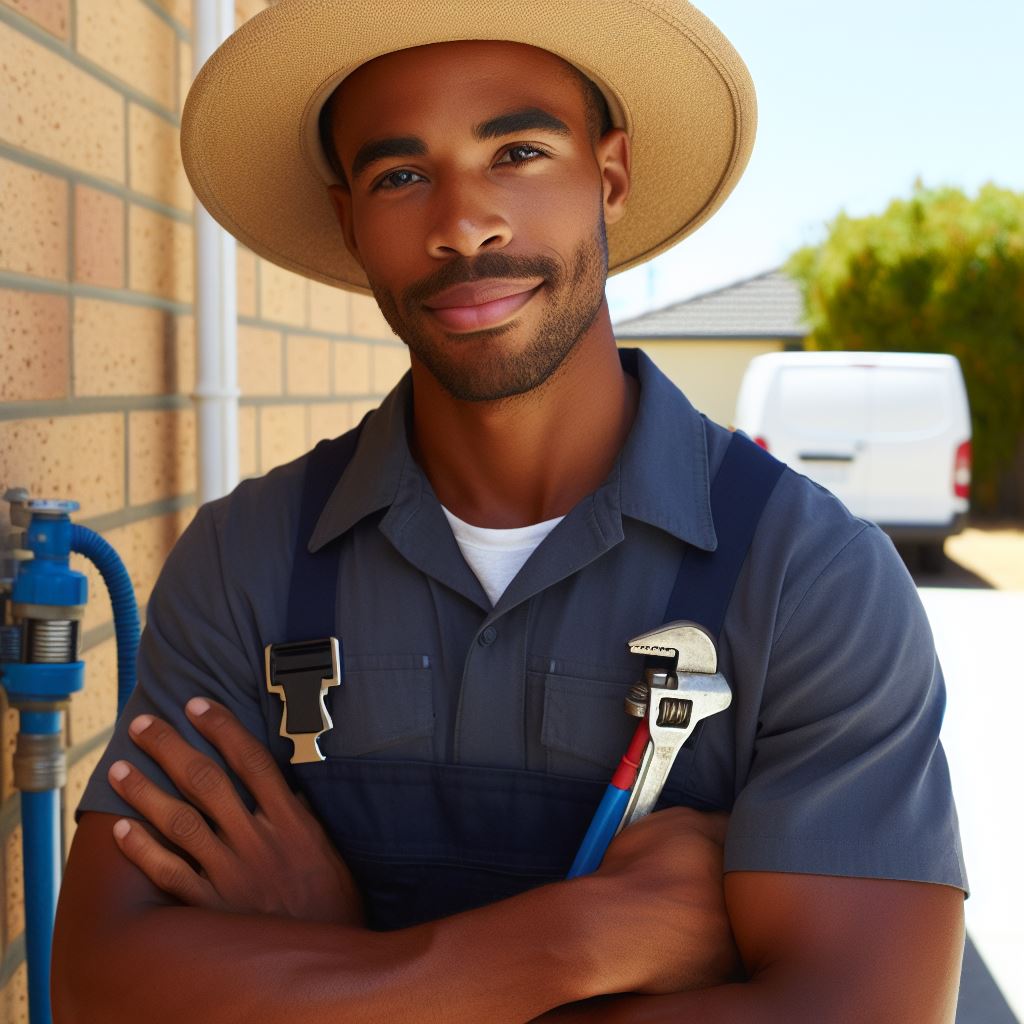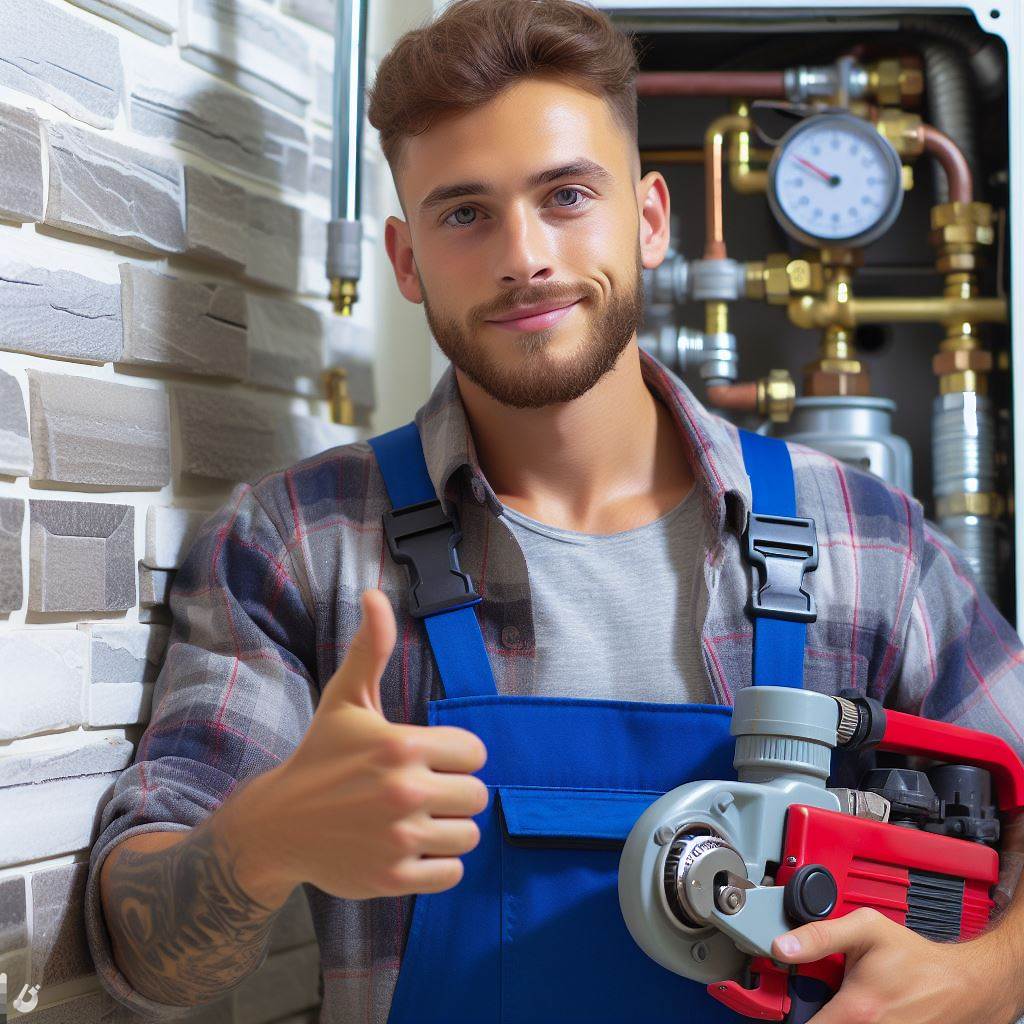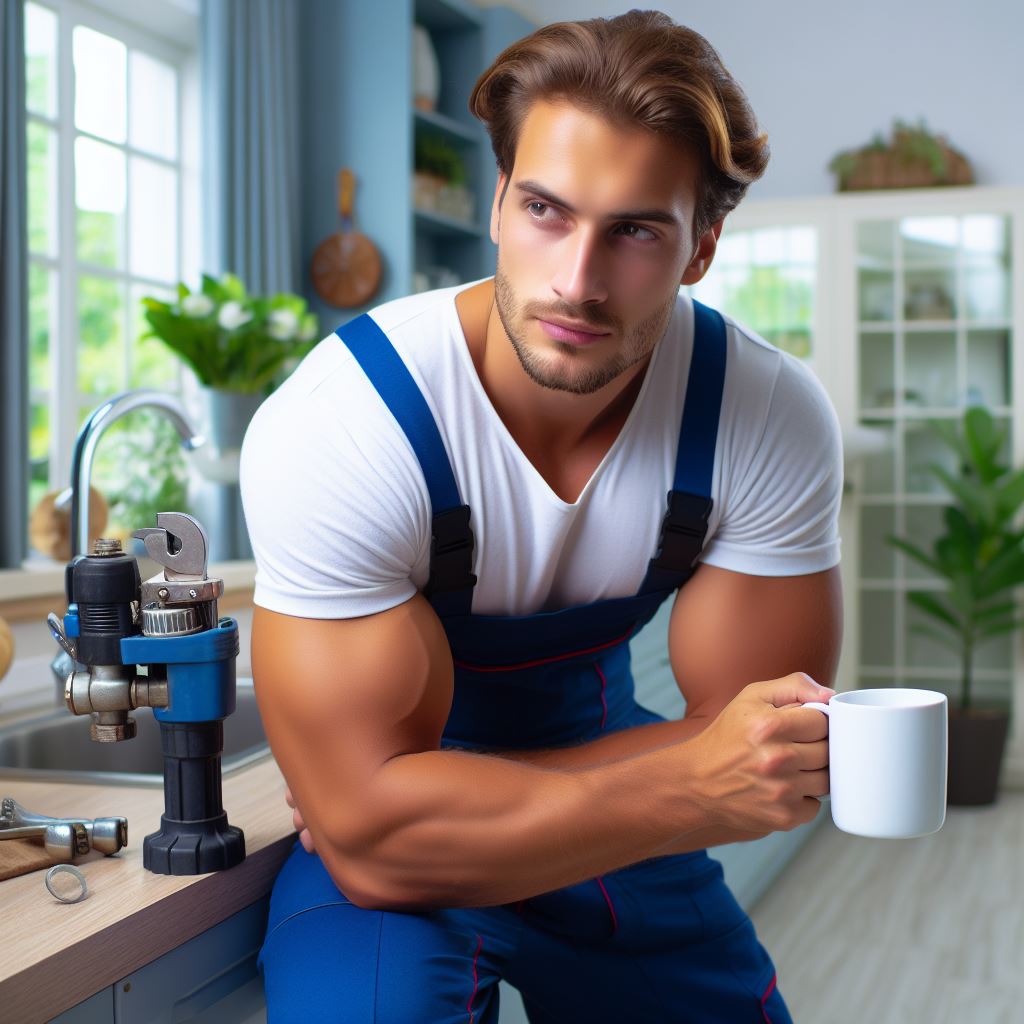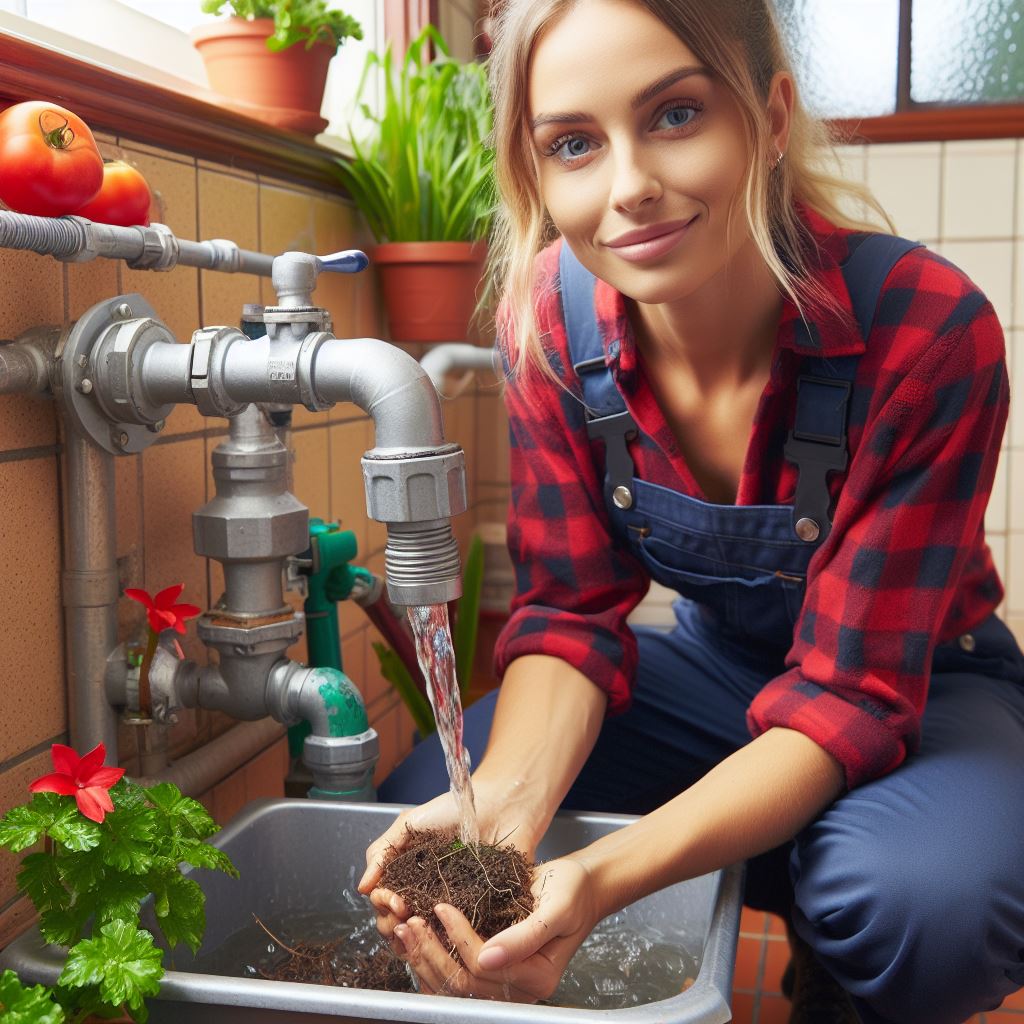Introduction
Plumbing profoundly shapes Australian households, impacting daily lives and ensuring seamless domestic functioning. Residents experience its pervasive influence.
Plumbing, as an integral infrastructure component, not only facilitates essential utilities but also contributes significantly to the overall comfort, health, and well-being of individuals and families.
Embarking on a more detailed journey into the essence of this blog post, the primary objective unfolds as a commitment to the Australian populace.
Equip homeowners and residents with DIY plumbing tips to empower them in addressing common challenges autonomously.
By extending this knowledge base, the blog aims to foster a sense of self-reliance and confidence among Aussies, fostering a proactive approach to plumbing maintenance and troubleshooting.
Equip homeowners and residents with DIY plumbing tips to empower them in addressing common challenges autonomously.
Understanding basic plumbing systems
The various components of a plumbing system
Pipes
A plumbing system consists of pipes that carry water and waste throughout a building. Pipes can be made of various materials such as copper, PVC, or galvanized steel.
Faucets and fixtures
Faucets and fixtures are where water is dispensed in a plumbing system. They include sinks, toilets, showers, and bathtubs.
Faucets and fixtures can be made of different materials such as chrome, stainless steel, or brass.
Valves and shut-off devices
Valves and shut-off devices control the flow of water in a plumbing system. They are used to turn the water on or off and regulate the water pressure.
Common types of valves include ball valves, gate valves, and pressure relief valves.
Drains and sewer lines
Drains and sewer lines are responsible for carrying waste and wastewater away from a building.
Fixtures in the building connect drains, and sewer lines transport waste to the municipal sewer system or septic tank.
Importance of knowing how these components work together
Understanding how the various components of a plumbing system work together is crucial for several reasons:
Maintenance and repairs
Knowing how the different parts of a plumbing system interact can help homeowners diagnose and troubleshoot issues.
This knowledge can save time and money by avoiding unnecessary repairs or calling a professional plumber.
Preventing water damage
Awareness of the plumbing system allows homeowners to identify potential leaks or water damage. By promptly addressing issues such as dripping faucets or pooling water, extensive damage can be prevented.
Energy efficiency
Understanding the plumbing system can help homeowners identify areas where water efficiency can be improved.
For example, replacing old faucets or toilets with low-flow models can significantly reduce water consumption and lower utility bills.
Safety
Knowing how to shut off the water supply in case of emergencies (such as a burst pipe) can prevent flooding and property damage.
Additionally, understanding how to use shut-off valves can safeguard against potential accidents or injuries.
In essence, a basic understanding of the components of a plumbing system is essential for homeowners.
By knowing how pipes, faucets, valves, and drains work together, individuals can maintain their plumbing system, prevent water damage, improve energy efficiency, and ensure safety.
Read: Top Plumbing Trends in Australian Engineering
Identifying common plumbing issues
- Leaks and dripping faucets: A leaking faucet can waste a significant amount of water and cause an increase in your water bill. It’s usually caused by a worn-out washer or a faulty valve.
- Clogged drains and toilets: Clogged drains and toilets are common plumbing issues that can be caused by various factors, such as hair, soap scum, food particles, or foreign objects.
- Low water pressure: If you’re experiencing low water pressure, it could be due to mineral buildup in your pipes or a problem with the municipal water supply.
- Running toilets: A running toilet can waste a significant amount of water. It’s often caused by a faulty flapper valve or a problem with the fill valve.
- Noisy pipes: Noisy pipes can be an indication of loose or worn-out parts, such as loose pipe straps, water hammer, or high water pressure.
- Frozen pipes in winter: In colder regions, frozen pipes can be a common plumbing issue. It can cause pipes to burst and lead to significant water damage.
- Water heater problems: Water heater problems can range from a lack of hot water, strange noises, or water leaking. It’s best to address these issues promptly to avoid further damage.
- Sewer line backups: Sewer line backups can be a messy and unpleasant plumbing issue. It can be caused by clogs, tree roots, or a damaged sewer line.
Identifying when a professional plumber might be necessary
While some plumbing issues can be fixed by homeowners, there are situations where it’s best to call a professional plumber:
- If you’re not confident in your plumbing skills or knowledge
- If the issue seems complex or requires specialized tools
- If multiple plumbing fixtures are affected
- If you’ve tried DIY solutions but the problem persists
- If there’s a risk of water damage or potential hazards
Read: The Future of Plumbing Tech in Australia
Essential tools for DIY plumbing
Basic tools
- Plunger: a must-have tool for unclogging toilets and drains.
- Wrench: used for tightening and loosening various plumbing fittings.
- Pliers: essential for gripping and turning pipes, nuts, and bolts.
- Pipe cutter: necessary for cutting pipes to the desired length.
- Tape measure: helps ensure accurate measurements for pipe cutting and fitting.
Specialty tools
- Pipe snake: used to remove clogs and blockages deep within pipes.
- Water pressure gauge: measures the water pressure in your plumbing system.
- Pipe wrench: provides a strong grip on pipes when tightening or loosening fittings.
- Pipe threader: used for creating threaded ends on pipes for easy installation.
- Propane torch: necessary for soldering and joining copper pipes.
Importance of having the necessary tools before attempting DIY plumbing
- Efficiency and effectiveness: having the right tools ensures that the job is done properly and efficiently.
- Safety: using improper tools can lead to accidents, injuries, or damage to plumbing components.
- Cost-saving: investing in the necessary tools allows you to handle minor plumbing issues on your own, saving money on professional services.
- Convenience: having the tools readily available saves time and effort compared to searching for or borrowing tools.
- Emergency preparedness: owning the essential tools prepares you to handle plumbing emergencies promptly and effectively.
In fact, DIY plumbing requires a set of essential tools that every Aussie homeowner should have.
Basic tools such as plungers, wrenches, and pliers are necessary for common plumbing tasks, while specialty tools like pipe snakes and water pressure gauges are crucial for more complex issues.
Having these tools not only ensures efficiency and effectiveness but also promotes safety, cost-saving, convenience, and emergency preparedness.
By equipping yourself with the right tools, you can confidently tackle various plumbing challenges without relying on professional services.
Your Personalized Career Strategy
Unlock your potential with tailored career consulting. Get clear, actionable steps designed for your success. Start now!
Get StartedRead: A Day in the Life of an Aussie Plumber

You Might Also Like: Designing Drought-Tolerant Aussie Gardens
Safety precautions for DIY plumbing
Importance of turning off the water supply
Turning off the water supply is crucial before starting any DIY plumbing project. This prevents accidental leaks and water damage.
Ensuring the availability of safety equipment
Protective equipment such as gloves, goggles, and a face mask should be worn to safeguard against potential injuries and exposure to harmful substances.
Understanding and following local plumbing codes and regulations
Familiarize yourself with the specific plumbing codes and regulations in your area. This ensures compliance and avoids potential legal issues.
Knowing when to seek professional help to avoid potential hazards
Recognize your limitations and when a plumbing issue surpasses your skill level. It’s important to call a professional plumber to avoid accidents and costly mistakes.
When engaging in DIY plumbing tasks, safety should always be a top priority. By taking the necessary precautions, you can minimize the risks associated with plumbing projects.
Remember, a little prevention goes a long way.
Read: How to Become a Plumber in Australia
Step-by-step guide to common DIY plumbing tasks
Fixing a leaky faucet
- Turn off the water supply to the faucet.
- Remove the handle and the cartridge or valve stem.
- Install a new cartridge or washer.
- Reassemble the faucet and turn on the water supply.
Clearing a clogged drain or toilet
- Use a plunger to create suction and loosen the clog.
- If the plunger doesn’t work, try using a drain snake or auger.
- Mix water with baking soda and vinegar to break down the clog.
- Flush the drain or toilet with hot water to clear the remaining debris.
Replacing a showerhead or faucet
- Turn off the water supply to the shower or faucet.
- Remove the old showerhead or faucet by unscrewing it.
- Apply plumber’s tape to the threads of the new showerhead or faucet.
- Screw on the new showerhead or faucet and turn on the water supply.
Installing a new toilet
- Shut off the water supply to the toilet and drain the tank.
- Disconnect the water supply line and remove the old toilet.
- Install a new wax ring on the floor flange.
- Position the new toilet over the wax ring, then secure it in place and reconnect the water supply line.
Repairing or replacing a broken pipe
- Turn off the water supply to the affected area.
- Cut out the damaged section of pipe using a pipe cutter.
- Measure and cut a new section of pipe to fit.
- Use plumbing fittings and adhesive to secure the new pipe in place.
Flushing a water heater
- Turn off the power and gas supply to the water heater.
- Attach a hose to the drain valve and place the other end in a drain or outside.
- Open the drain valve and let the water flush out until it runs clear.
- Close the drain valve and refill the tank before turning the power and gas supply back on.
Dealing with frozen pipes
- Open the faucet connected to the frozen pipe to relieve pressure.
- Apply heat to the frozen section using a hairdryer, heat lamp, or heated towels.
- Continue applying heat until water flows freely from the faucet.
- Insulate exposed pipes to prevent future freezing.
Tips for maintaining plumbing systems to prevent future issues
- Regularly inspect pipes for leaks, corrosion, or damage.
- Avoid pouring grease or oil down drains.
- Use drain strainers to catch hair and debris.
- Opt for regular maintenance and check-ups by professional plumbers.
By following these step-by-step guides, you can confidently tackle common DIY plumbing tasks around your home.
Remember, though, that if you encounter a problem that seems beyond your skill level, it’s always wise to call a professional plumber for assistance.
Conclusion
The Importance of DIY Plumbing Knowledge for Aussies
In closing, underscoring the crucial role of DIY plumbing knowledge for Australians cannot be overstated.
By acquiring essential plumbing skills, homeowners and residents empower themselves to address common issues independently, fostering a sense of self-reliance and confidence.
Encouraging the Adoption of Necessary Precautions and Basic Plumbing Skills
It is paramount to encourage individuals to proactively adopt necessary precautions and acquire fundamental plumbing skills.
Learning these basics not only equips them to handle routine challenges but also contributes to a safer and more resilient living environment.
This empowerment through knowledge is a proactive step towards minimizing potential plumbing issues.
Reminding to Seek Professional Help When Needed
While self-sufficiency is commendable, it is equally important to recognize the limitations of DIY efforts.
The reminder to seek professional help when faced with complex or potentially hazardous plumbing situations is crucial.
Consulting experts ensures the resolution of issues with precision and adherence to safety standards, preventing further complications.
Concluding with Final Thoughts and Encouragement for Community Engagement
In the end, inviting readers to share their DIY plumbing experiences and advice in the comments section fosters a sense of community engagement.
By exchanging insights and practical tips, individuals contribute to a collective pool of knowledge, creating a supportive platform for learning and growth within the realm of plumbing.
Your valuable experiences and advice can inspire others to embark on their own DIY plumbing journeys while fostering a collaborative and informed community.




